Two decades after construction work began, interspersed with periods of lengthy delays, the first phase of the Lagos State Metro Rail has now come alive
INTRODUCTION
With nearly 25 million residents, Lagos State is the most populous state in the Nigerian Federation. A staggering 85 percent of those residents live in the state’s metropolitan area—the city of Lagos—making it the most densely populated urban centre on the entire African continent.
Despite creaking infrastructure, chaotic road traffic, frequent power outages and subpar governance, the city is still one of the continent’s major financial hubs with an economy larger than those of several African countries put together. The city is home to one of the largest and busiest seaports on the continent.
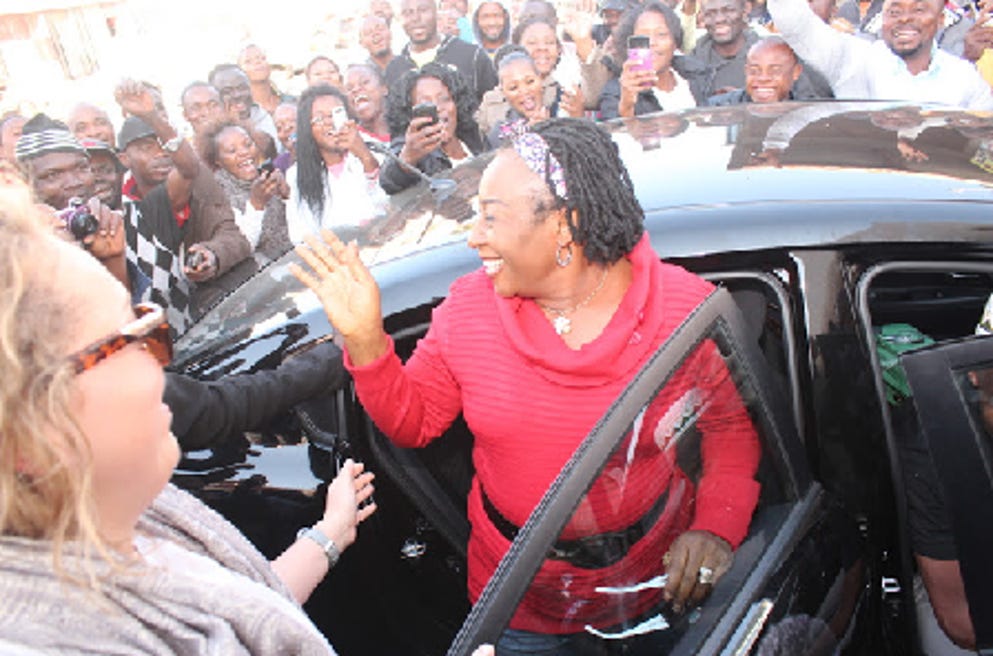
Lagos also hosts Nigeria’s music and film industry, both of which are wildly popular across the length and breadth of Sub-Saharan Africa, and have significantly influenced the culture, entertainment, art and fashion in the continent.
SIDE BAR: NIGERIAN FILM INDUSTRY
The Nigeria’s film industry, which provides employment for thousands of people, have grown into a multi-million dollar enterprise mostly without any government intervention— a profound phenomenon in a continent where most things are government-driven.
The industry churns out 800-1000 movies annually. A few big budget ones get shown in the local cinemas. The vast majority are made on shoestring budgets and released in DVD format or sold to online video streaming services, both domestic and foreign. For instance, Nigerian film industry sells many of its products to the foreign-owned Netflix, which has significant sub Saharan audiences in Nigeria, Kenya and South Africa.
TV channels in certain countries of the Southern African subregion have paid to broadcast Nigerian movies and soap operas. In 2004, Zambia National Broadcasting Corporation (ZNBC) paid to broadcast a Nigerian drama series called “Super Story” to their citizens. South Africa’s MultiChoice Network has a continent-wide satellite TV channel devoted to Nigerian films.

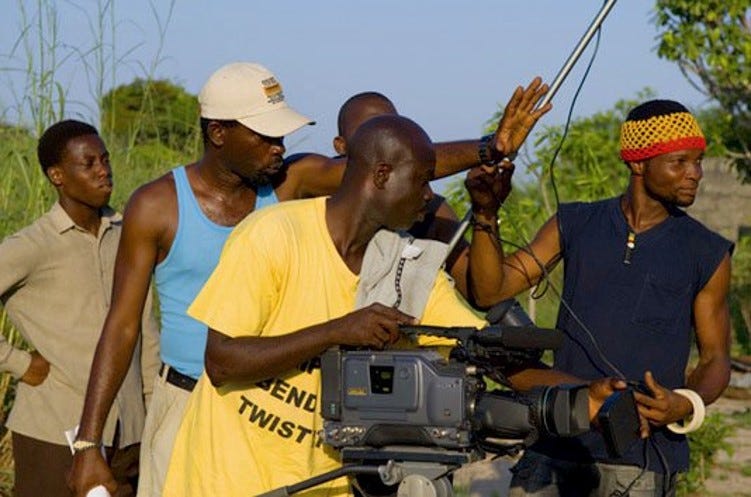

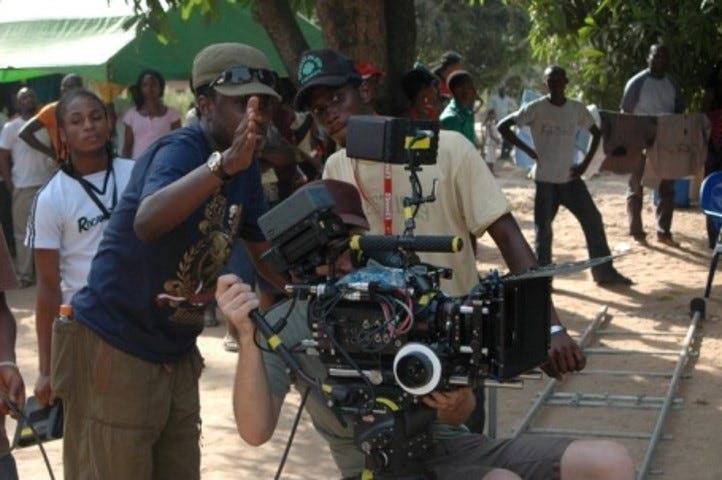
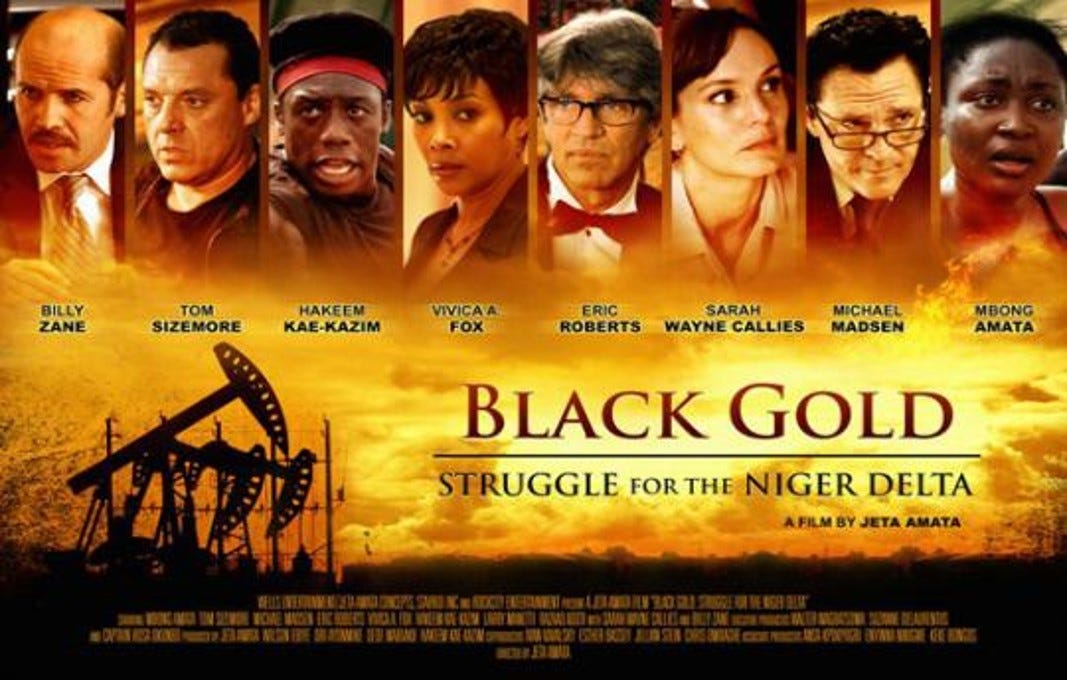
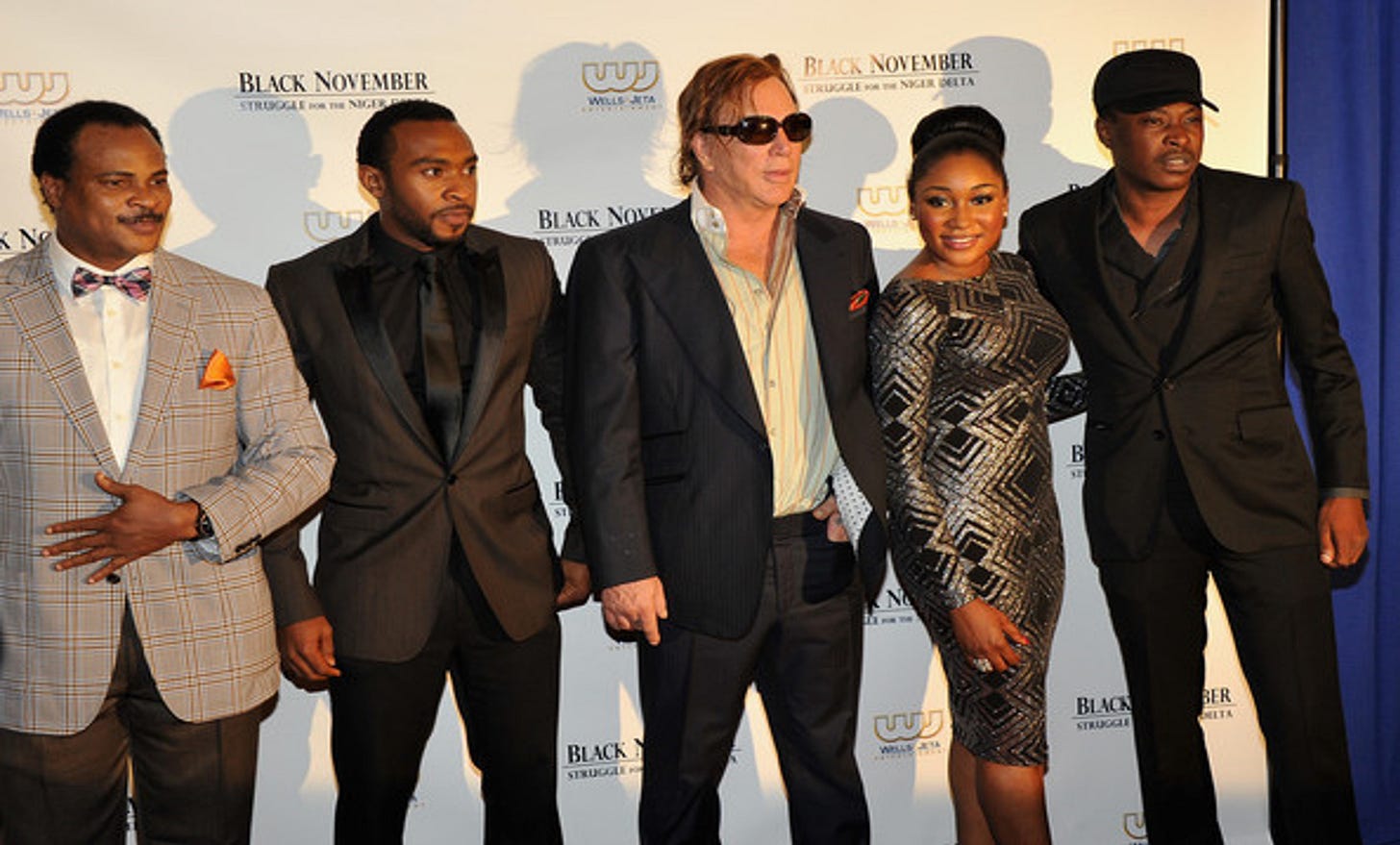

TRAFFIC CONGESTION IN LAGOS
With 5.2 million vehicles on its roads and bridges, Lagos has a huge traffic congestion problem. During rush hour, journeys that should normally take 40 minutes to complete, may take up to two or three hours due to gridlock on the roadways.
I have put together a 45-second video montage of Lagos roadways when traffic is a tad lighter than usual :
The first serious attempt to solve the congestion problem by creating an intra-city metro rail system was in 1983. Shortly after his election as Lagos State Governor on 1 October 1979, Alhaji Lateef Jakande began to take steps to build an underground railway system for the densely populated city of Lagos.
He created a limited liability company called Lagos Metroline Limited (LML) in 1979 and had it registered in 1980. Feasibility studies were carried out and a consortium of European companies was hired to implement the metro railway project despite strong misgivings from the Nigerian federal government, which was then under the control of the National Party of Nigeria (NPN). Lateef belonged to United Party of Nigeria (UPN), which headed the political opposition at the federal legislature.
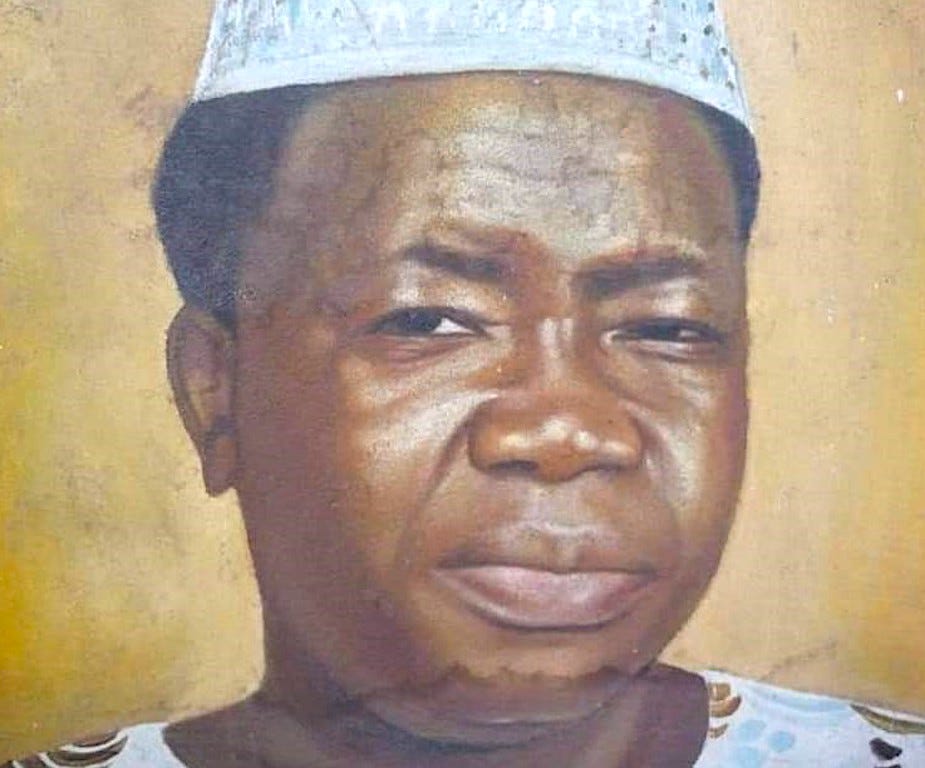
In July 1983, Governor Lateef Jakande flagged off the project by laying down the foundation stone at the site chosen for the railway tracks to pass through. Unfortunately, a military coup d’état on 31 December 1983 led to the dissolution of Nigeria’s Second Republic.
Having successfully eliminated the elected federal presidency, the federal legislature, all state governments and state legislatures, the new military junta decided to cancel the Lagos metro rail project.
The European consortium promptly went to court, citing breach of contract. The Nigerian military junta paid $78 million to the consortium as an out-of-court settlement.
As a result of that 1983 military coup, Lagos State was denied the opportunity to solve its traffic congestion problem. In fact, the continent of Africa would not see another full fledged intra-city rail project until the completion of the first phase of Egypt’s Cairo Metro in 1987.
With the formal end of 33 years of military dictatorship in Nigeria on 29 May 1999, civilian government officials— some of whom had won rigged elections— began to think of ways of legitimizing themselves in the eyes of dismayed voters.
In Lagos, the elected state governor, Bola Ahmed Tinubu, decided to revive Lateef Jakande’s metro rail project. But there were serious issues about how Lagos State would finance the project as Tinubu belonged to the (now defunct) opposition Action Congress of Nigeria (ACN) while the federal government was under the firm control of Peoples Democratic Party (PDP).
The PDP had set its eyes on winning control of Lagos State and its commercial city in future elections. Therefore, the PDP-controlled federal government was not interested in providing any funds to Governor Tinubu to finance a project that could possibly convert a significant number of Lagosians (i.e. Lagos inhabitants) into loyal voters of ACN.
Despite lack of support from the federal government, Tinubu soldiered on. While dealing with allegations of corruption and lying about his educational qualifications, he had to weather the storm of recriminations that broke out when the Lagos Independent Electric Power Project, initiated in the year 1999, ended in a fiasco. The American company hired to handle the electricity project, ENRON Corp., had declared bankruptcy in October 2001 after its accounting scandal became public knowledge.
Tinubu’s Lagos city metro railway project— formally declared in 2003— had better luck. His state government awarded the contract to China Civil Engineering Construction Corporation (CCEC), which would also go on to build the rival Abuja Metro Rail system owned by the federal government.
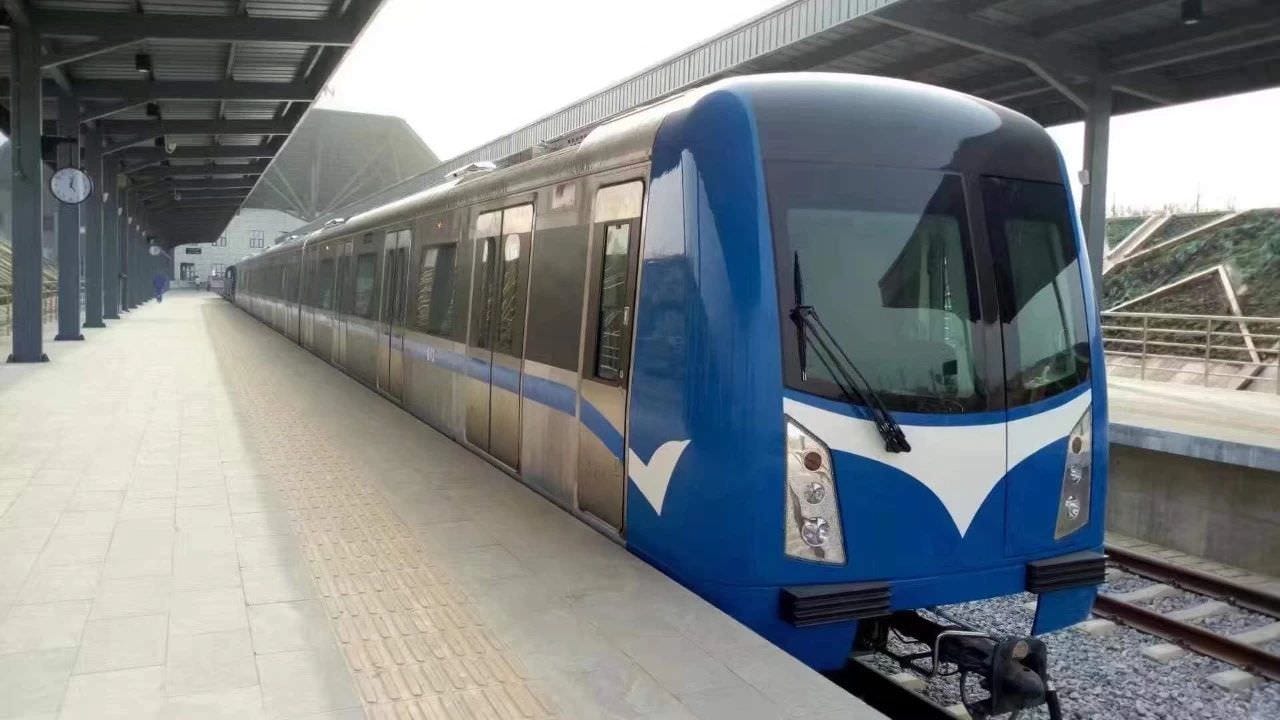
Construction work on Lagos metro rail project progressed slowly, and endured long periods of inactivity, due to a shortage of funds on the part of the Lagos State and the reluctance of the federal government to contribute any meaningful funds.
The project was still plodding along when Tinubu completed eight years as state governor. Outside elected office, he would remain an important power broker in Lagos for many years before participating in the controversial election that catapulted him into the federal presidency on 29 May 2023.
His gubernatorial successors brought French-owned Alstom and Spanish-owned Talgo into the metro rail project to maintain a level of balance with the Chinese government-owned CCEC.
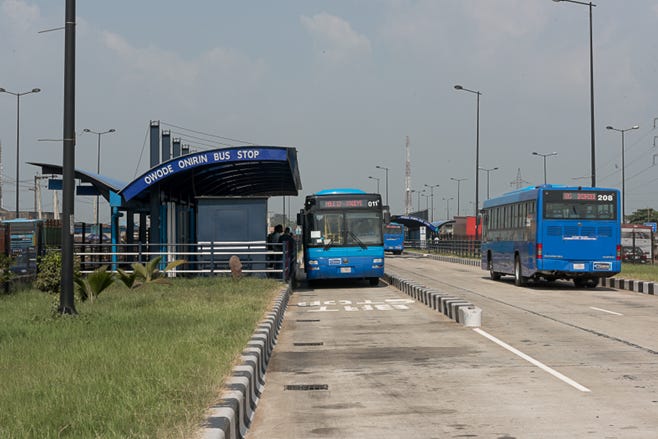
In 2013, All Progressives Congress (APC) came into existence through the merger of Bola Tinubu’s Action Congress of Nigeria (ACN) and fellow opposition parties, All Nigeria Peoples Party (ANPP) and Congress for Progressive Change (CPC).
In March 2015, the Lagos metro rail project received a massive boost when the ruling Peoples Democratic Party (PDP) lost its control of the federal presidency to All Progressives Congress (APC) in the presidential election of that year, which is generally seen as free and fair unlike the controversial 2023 Presidential Election marred by serious allegations of fraud and vote-rigging.
Starting from May 2015 onwards, the APC-controlled federal government contributed some funds to the Lagos rail project. With greater finance, the pace of construction work increased. Nevertheless, it still took another eight years for the first phase of the project to be completed.
The post-2015 delays had been due to incompetence (and perhaps, corruption). Lagos State rail officials had purchased old subway H5-trains decommissioned by Toronto Transit Commission and invested a lot of time and money having them refurbished in USA— only to suddenly change their minds and scrap the Canadian rolling stock in favour of buying brand new metro trains from the Chinese state-owned CRRC Dalian Co. Ltd.
The project was further delayed in 2018 when Alstom was asked to carry out a detailed review of the entire work done so far. By 2021, construction work had resumed on the rail project.
In January 2023, it was announced that first phase of the project had been completed and that Blue Line would soon become operational.
In April 2023, Lagos state government allowed some Lagosians to enjoy a short test run on the Blue Line. That maiden train ride was captured by the privately-owned Nigerian TV channel, TVC News :
The Blue Line formally commenced commercial operations on 4 September 2023 with five stations and 13 kilometres (8.1 miles) of railway track.
When all construction phases are completed in the future, the entire Blue Line would have thirteen stations and 27 kilometres (17 miles) of railway track, and is expected to carry 500,000 passengers a day.
All photos below can be enlarged by clicking on them
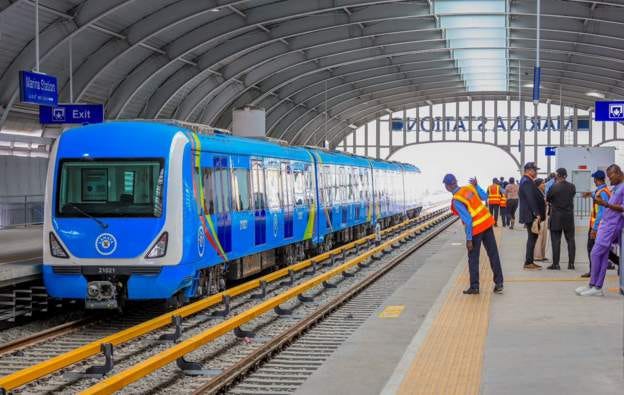
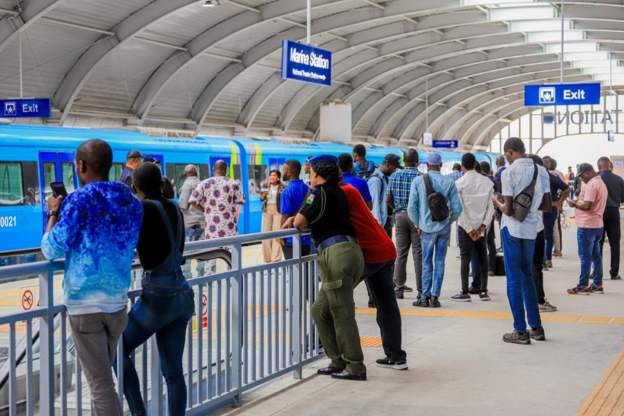
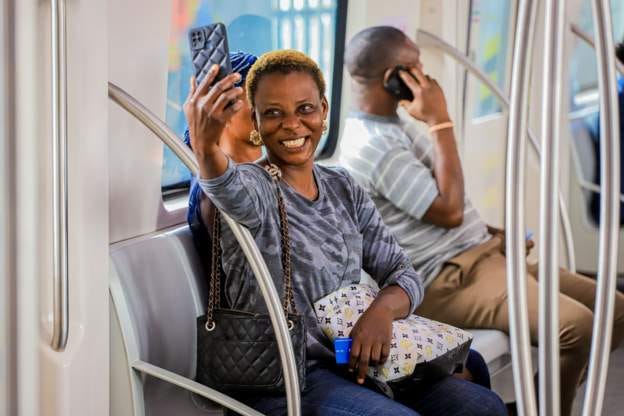
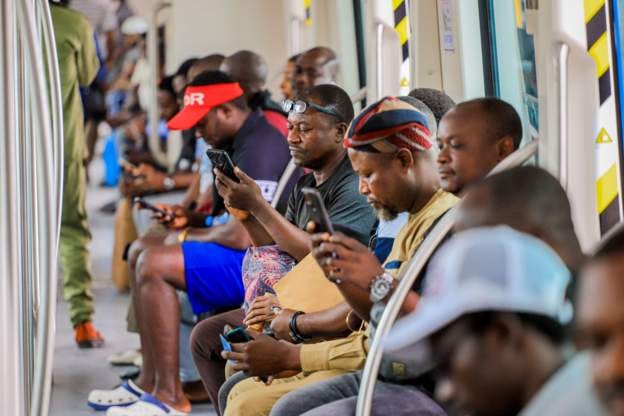
Below is video footage of a metro train arriving at one of the stations along the route of the Blue Rail Line:
Video footage of a filled train departing from a metro station along the route of the Blue Line on the first day of commercial operations:
In addition to the planned extension of the Blue Line, construction work is still pending on the much longer Red Line.
Ten years ago, Red Line had been a source of quarrel between the state government of Lagos and the federal government as part of the route chosen for the Red Line overlapped with a section of the federal-owned Lagos–Kano Standard Gauge Railway.
However, when All Progressives Congress (APC), which runs Lagos State, also gained control of the federal government after the 2015 Presidential Election, the problem was resolved with a signed agreement. The agreement stipulated that Red Line will share right-of-way with the Lagos–Kano Standard Gauge Railway.
The Red Line is expected to have 37 kilometres (23 miles) of railway track and thirteen stations, including one at the domestic and international terminals of the Murtala Muhammed International Airport. Lagos State government expects that this particular railway line would carry 750,000 passengers per day at inception and 1.1 million passengers per day when fully operational.
As shown in the metro rail map above, the government of Lagos State has ambitious plans to build five more colour-coded railway lines in addition to the Blue and Red Lines.
Given the bureaucratic red tape nightmare that exists in officialdom, the corruption, the vagaries and politics of funding capital projects, it would be realistic to expect Lagos State officials to be able to deliver on their promise to finish the extension of the Blue Line and complete the construction of the Red Line. Both railway lines alone would go a long way in decongesting the roads and bridges of Lagos State. Hopefully, another twenty years would not have to elapse before work on both lines are completed.
As for the five additional colour-coded railway lines being proposed for construction on the map pictured above….well…they are all doable, but it would probably take a couple of decades to achieve. That is, assuming Lagos State officials are serious about keeping their promises.
THE END
Dear reader, if you like my work and feel like making a small donation, then kindly make for my Digital Tip Jar at Buy Me A Coffee




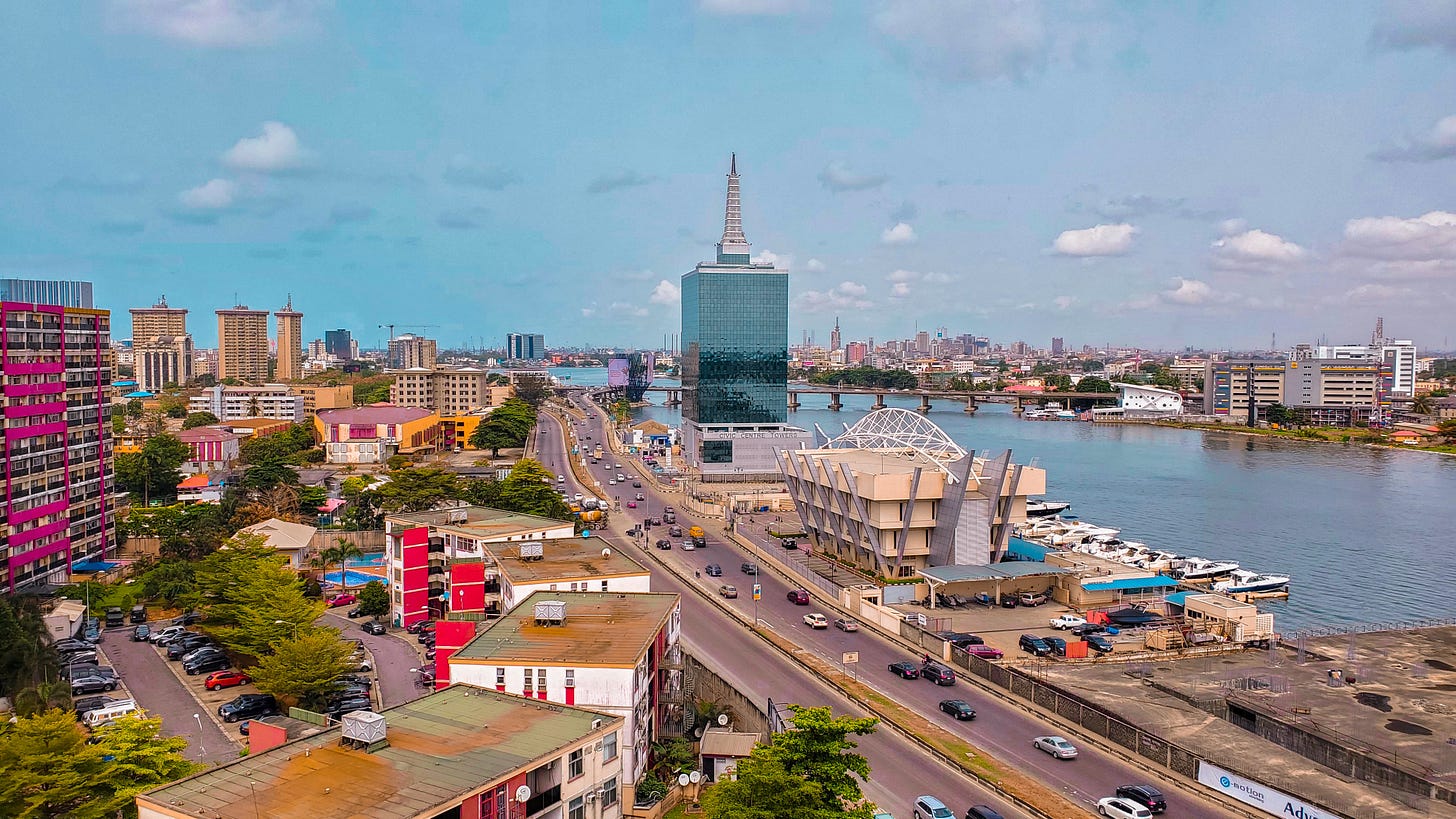
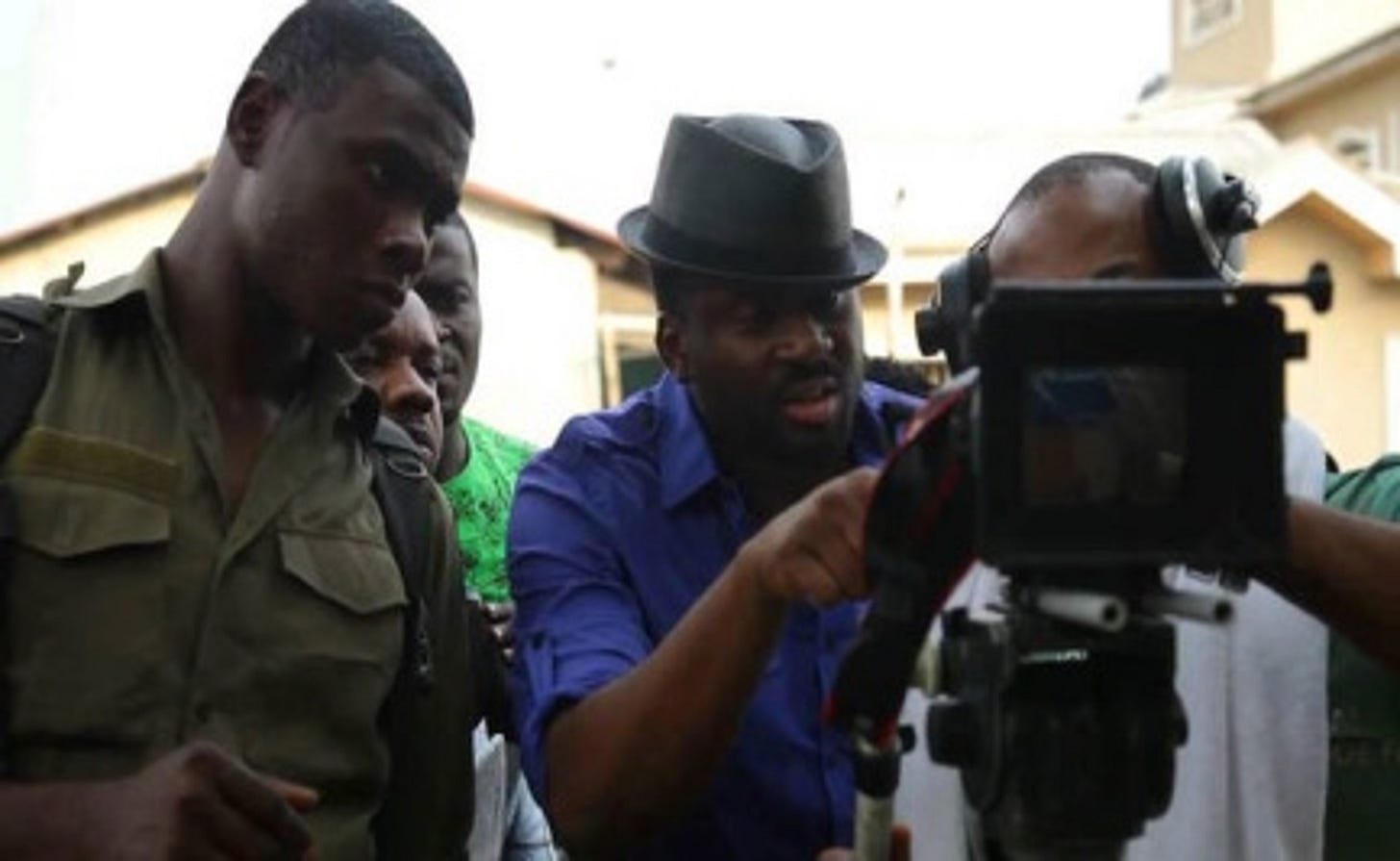
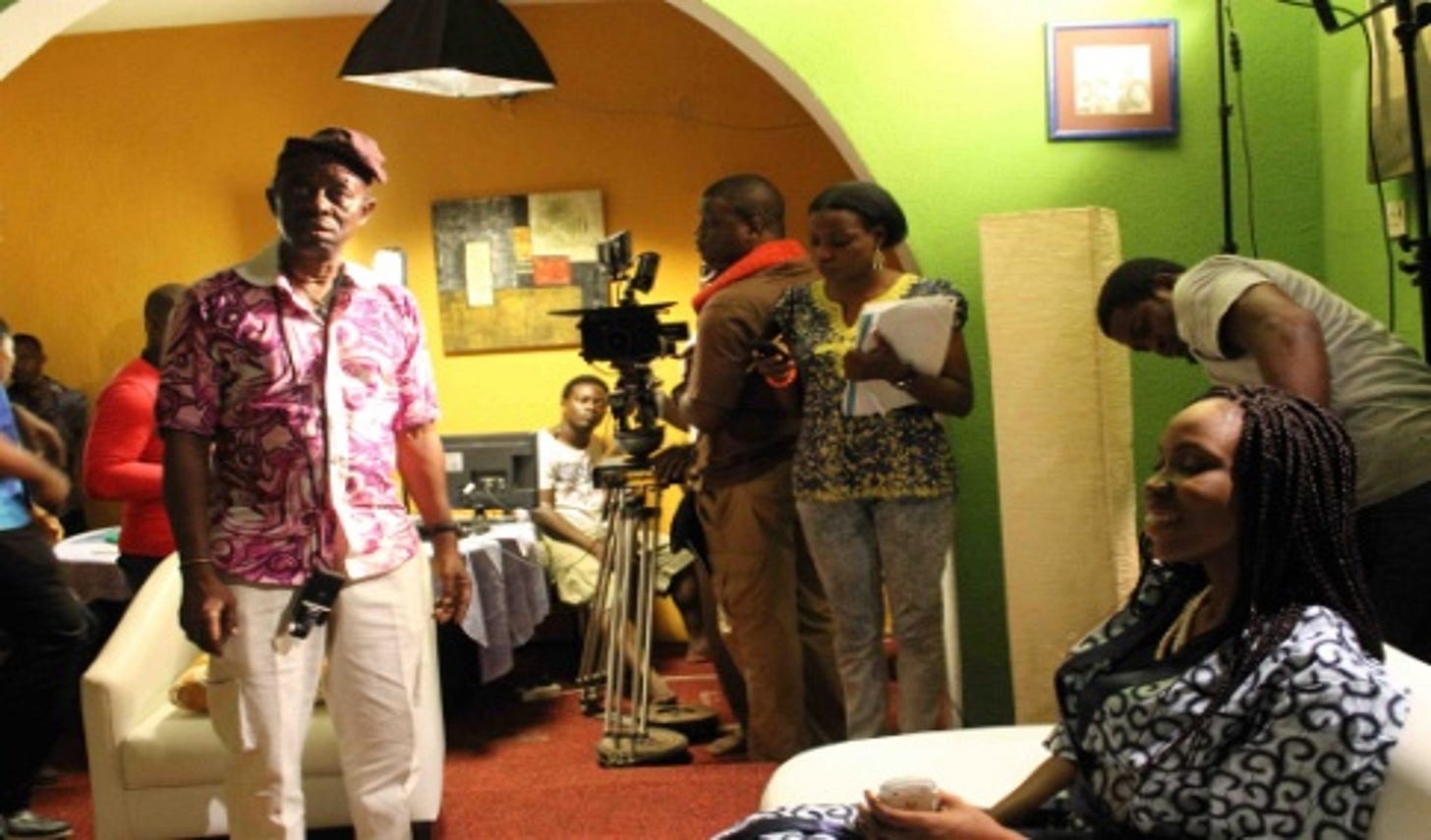
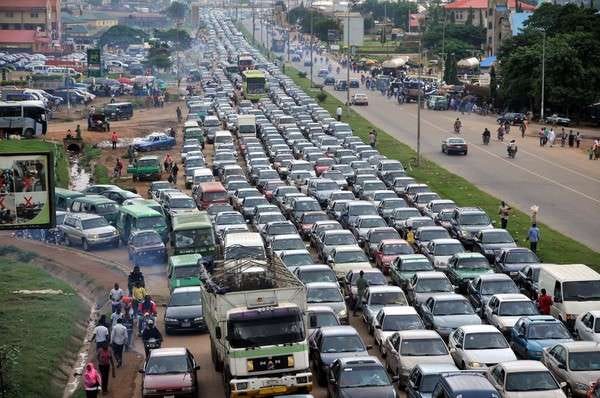


Tinubu didn't become a senator after his term as lagos state governor. He was only a senator in the short-lived interim government of Shonekan. His wife, Remi Tinubu, on the other hand, was a federal senator right up to his election as president.
Thank you for another great and informative post. You make my world a little larger and I really appreciate you and your work!